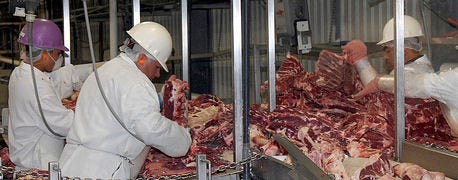March 11, 2015

After nearly 40 years in the business, 58-year-old Kent Weise, a Des Moines butcher, says few young people want to go into the profession despite the growing demand for locally produced beef.
Related: What's the Point of All This Farm Transition Talk, Anyway?
Weise, who has three children – none of which are prepared to take over his meat business – postulates the gore factor may be to blame.
"It's killing cows. It's blood and guts," Weise told the Associated Press.

Demand for local beef is rising, but few opt to become skilled butchers; beef producers drive farther for custom meat processing (USDA photo)
He's among the thousands of butchers who are retirement age; the number of meat-cutting businesses is declining also. In 1990, the AP reports that there were 1,200 federally inspected livestock slaughterhouses in the U.S. By 2010 the number had dropped to 800.
Despite the decline, business is still thriving. An Ohio butcher told the AP that he's booked four to five months in advance. But beef producers are driving farther and farther away to reach the butcher shop – sometimes as long as 100 miles, the report notes.
Related: Shoppers Want Value, Quality and Variety in Meats
Processors suggest the difficulty in finding new workers to take over as professional butchers is part pay, part difficulty.
Meat-cutters made a median of $13.75 an hour in 2012, according to federal data reported by the AP, but smaller butchers may make much more.
Continue reading the report, Few want the tough job of cutting local beef, on The Salt Lake Tribune.
You May Also Like




